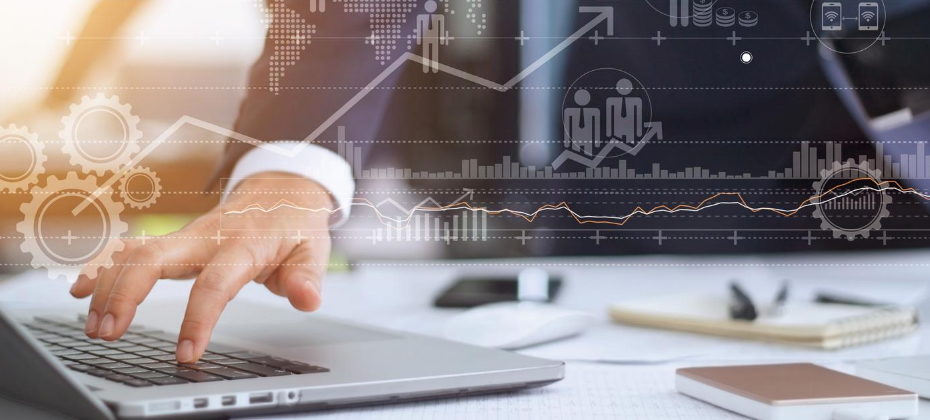Data & Analytics

The shift created by the COVID-19 pandemic is still being realized. One thing that we know for sure is that North American consumers’ expectations continue to rise, with a focus on online security and their digital experience. In mid-September of this year, Experian surveyed 3,000 consumers and 900 businesses worldwide—with 300 consumers and 90 businesses in the U.S.—to explore the shifts in consumer behavior and business strategy pre- and post-COVID-19. More than half of consumers surveyed continue to expect more security steps when online, including more visible security measures in place on websites and more knowledge about how their data is being protected and stored. However, those same consumers aren’t willing to wait more than 60 seconds to complete an online transaction making it more important than ever to align your security and experience strategies. While U.S. consumers are optimistic about the economy’s recovery, they are still dealing with financial challenges and their behaviors have changed. Future business plans should take into account consumers’: High expectations of their online experience Increases in online spending Difficulty paying bills Reduction in discretionary spending Moving forward, businesses are focusing on use of AI, online security, and digital engagement. They are emphasizing revenue generation while looking into the future of online security. Nearly 70% of businesses also plan to increase their fraud management budgets in the next 6 months. Download the full North America Insights Report to get all of the insights into North American business and consumer needs and priorities and keep visiting the Insights blog in the coming weeks for a look at how trends have changed from early in the pandemic. North America Insights Report Global Insights Report

In late September, California announced a new requirement for the sale of all new passenger vehicles to be zero-emission by 2035. While that’s still 15 years away, the executive order created quite a buzz in the automotive industry, reigniting conversations about electric vehicles (EVs) and the current market penetration of the most common zero-emission vehicles. With that in mind, we wanted to take a closer look at the state of EVs—across the country and more specifically, in California—to better understand the EV market and how it’s grown over the past few years. As of Q2 2020, electric vehicles comprised just 0.312% of vehicles in operation (VIO). While EV market share seems small, there has been significant growth since Q2 2015, when they only held 0.0678% of the VIO market—meaning the growth of EVs has more than tripled (3.6x) in the last five years. But even still, other segments, such as CUVs have seen faster growth in the same time period (10% market share in Q2 2020 compared to 6.2% in Q2 2015). California sees faster EV adoption California has seen growth in EV adoption in the last decade, but it has grown exponentially in the last five years. EVs comprised 1.79% of new vehicle registrations 2015, and the percentage grew to 5.32% as of Q2 2020. Much of the growth occurred between 2017 and 2018, when market share jumped from 2.62% to 5.04% year-over-year, with the introduction of the more cost-effective Tesla Model 3. Even with that growth, California new vehicle purchases have a long way to grow to move up to 100% EV. With the popularity of the Model 3, it’s somewhat unsurprising, Tesla holds the lion’s share of the EV market in California, making up 61.9% of EVs on the road within VIO, and nationally at 64.8% share. That could potentially change down the road though. Over the next two years, numerous manufacturers have plans to introduce electric versions of popular models or introduce new EV models altogether. This not only creates competition but could also help continue to drive down vehicle cost, making EVs a more viable option for consumers. Examining costs and other factors Cost is one of the key considerations that industry experts have routinely brought up over the years as a barrier to EV adoption. While some say that maintenance and fuel are cheaper in the long run, purchasing an EV today is typically a more expensive option at the dealership. The average loan amount for an EV in California in 2019 was $40,964, compared to an average vehicle loan amount of $32,373. That said, as EV adoption has seen exponential growth in the last five years, the average price has reduced. The average loan amount for an EV in 2016 was $78,646, dropping more than $35,000 in just five years as the technology continued to mature and vehicle costs lowered. Additionally, tax incentives, particularly in California, have also helped reduce affordability concerns. Though today’s tax incentives may not be in place through 2035, California will likely need to evaluate if economic incentives are required along the way to achieving the zero-emission vehicle deadline. However, even as costs lower, there are additional challenges to be overcome. For instance, infrastructure continues to be a barrier to adoption. In a 2019 AAA study, concern over being able to find a place to charge is the top reason listed as to why respondents are unlikely to purchase an EV in the future. In addition, according to Statisa, in March 2020, the U.S. had almost 25,000 charging stations for plug-in electric vehicles, and approximately 78,500 charging outlets. Of those charging stations, nearly 30% are in California. But with continued growth of EV sales, there will be a critical need for continued infrastructure nationwide—not just in California. In addition to these considerations, many impacts of the new mandate remain unknown. California will have to navigate increased electricity demand—especially during peak hours—and increases in battery scrappage, as EVs wear out. Gas stations will need to manage a loss of revenue, while changes in fuel taxes are likely, and vehicle technicians will require new training. If increased adoption of zero emission vehicles is California’s long-term goal, this could also impact the popularity of used vehicles, which could leave dealers looking for alternative locations to sell their gasoline-powered inventory. Looking toward the future of EVs Realistically, with 15 years until the mandate takes effect, the California mandate won’t have much of an immediate effect on the industry. But it does highlight key considerations for automakers and the aftermarket moving forward. To achieve better adoption rates, automakers need to understand the barriers to success and how they impact consumer behavior. An example of this is how California has seen higher EV adoption rates as the availability of plug-in stations has increased. Continuing to find ways to lower costs and focusing on savings over the lifetime of the vehicle is will help consumers see the value of an EV. At the end of the day, automakers play a large role in moving the country toward EV adoption, so having a clear understanding of the trends can help refine strategies as we move toward an electrified future.

In what has been an unprecedented year, marked by a global pandemic and a number of economic and personal challenges for both businesses and consumers, Americans are maintaining healthy credit profiles during the COVID-19 pandemic. Experian released the 11th annual State of Credit report, which provides a comprehensive look at the credit performance of consumers across America by highlighting consumer credit scores and borrowing behaviors. This year’s report provided an extended view into how consumers are managing and repaying their debts; showing most Americans are practicing responsible credit management by reducing utilization rates, credit card balances and late payments. Even in light of the pandemic, data on American consumers across all generations shows responsible credit management including reduced utilization rates, credit card balances and late payments. “While it’s difficult to predict when the economy will return to pre-pandemic levels, we are seeing promising signs of responsible credit management, especially among younger consumers,” said Alex Lintner, group president Experian Consumer Information Services. Highlights of Experian’s State of Credit report: 2020 State of Credit Report 2019 2020 Average VantageScore® credit score [1,2] 682 688 Average number of credit cards 3.07 3.0 Average credit card balance $6,629 $5,897 Average revolving utilization rate 30% 26% Average number of retail credit cards 2.51 2.42 Average retail credit card balance $1,942 $2,044 Average nonmortgage debt [3] $25,386 $25,483 Average mortgage debt $213,599 $215,655 Average 30 - 59 days past due delinquency rates 3.9% 2.4% Average 60 - 89 days past due delinquency rates 1.9% 1.3% Average 90 - 180 days past due delinquency rates 6.8% 3.8% Though not the same, some consumers are experiencing a second economic downturn. The economic fallout stemming from COVID-19 coming after the Great Recession of 2009, which took place in the not too distant past. Silent, Boomer, Gen X and Gen Z Americans are managing responsible credit utilization rates and holding credit cards below the recommended maximum. Are the older generations more credit responsible? Average VantageScore® credit score follows rank order from oldest to youngest – though contributed to by length of time possessing credit, number of lines of credit, and other factors that drive credit score – with the Silent Generation having the highest score (729), then Boomers (716), followed by Gen X (676), Gen Y (658) and Gen Z (654). Gen X consumers have the highest average credit card balance at $7,718 and utilization at 32%, while Gen Z has the lowest average credit card balance at $2,197 and the Silent Generation has the lowest utilization at 13%. Year over year data shows positive results driven by younger borrowers. While average utilization rates dropped for every generation, the most significant decreases were seen in Gen Z borrowers who saw a 6 percent reduction in their use of available credit, followed by Millennials who saw a 5% decrease year-over-year. While Gen Z and Gen Y are carrying more credit cards than they were in 2020, their credit card balances decreased year-over-year. These factors fueled a 13-point increase in average credit scores for Gen Z and an 11-point increase for Millennials. When spliced by state, the data Minnesota had the highest credit score, while Mississippi had the lowest credit score. While the future is still uncertain, perhaps consumers can find comfort in knowing there is much they can do to improve their financial health – including their credit scores – and that there are numerous resources for them to access during these unprecedented times. “As the consumer’s bureau, we are committed to informing, guiding, and protecting consumers. Educating Americans about the factors included in their credit profile and how to manage these responsibly is of critical importance, especially on the road to economic recovery from the COVID-19 pandemic,” said Lintner. In an effort to encourage consumers to regularly monitor and understand the information in their credit reports, Experian joined forces with the other U.S. credit reporting agencies, to offer free weekly credit reports to all Americans through April 2021 via AnnualCreditReport.com. In addition to the free weekly credit report at AnnualCreditReport.com, Experian also offers consumers free access to their credit report and ongoing credit monitoring at Experian.com. Additional credit education resources and tools Experian’s #CreditChat: Hosted by @Experian on Twitter with financial experts every Wednesday at 3 p.m. Eastern time The Ask Experian blog: Find answers to common questions, advice and education about credit Experian Boost: Add positive telecom and utility payments to your Experian credit report for an opportunity to improve your credit scores experian.com/consumer-education-content/ experian.com/coronavirus 1VantageScore® is a registered trademark of VantageScore Solutions, LLC. 2VantageScore® credit score range is 300 to 850.

As industry experts are still unsure when the economy will fully recover, re-entry into marketing preapproved credit offers seems like a far-off proposal. However, several of the top credit card issuers are already mailing prescreen offers, with many other lenders following suit. When the time comes for organizations to resume, or even expand this type of targeting, odds are that the marketing budget will be tighter than in the past. To make the most of the limited available marketing spend, lenders will need to be more prescriptive with their selection process to increase response rates on fewer delivered offers. Choosing the best candidates to receive these offers, from a credit risk perspective, will be critical. With delinquencies being suppressed due to CARES Act reporting guidelines, identifying consumers with the ability to repay will require additional assessment of recent credit behavior metrics, such as actual payment amounts and balance migration. Along with the presence of explicit indicators of accommodated trades (trades affected by natural disaster, trades with a balance but no scheduled payment amount) on a prospect’s credit file, their recent trends in payments and balance shifts can be integral in determining whether a prospect has been adversely impacted by today’s economic environment. Once risk criteria have been developed using a mix of bureau scores (like the VantageScore® credit score), traditional credit attributes and trended attributes measuring recent activity, additional targeting will be critical for selecting a population that’s most likely to open the relevant trade type. For credit cards and personal installment loans, response performance can be greatly improved by aligning product offers with prospects based on their propensity to revolve, pay in full each month or consolidate balances. Additionally, the process to select final prospects should integrate a propensity to open/respond assessment for the specific offering. While many lenders have custom models developed on previous internal response performance, off-the-shelf propensity to open models are also available to provide an assessment of a prospect’s likelihood to open a particular type of trade in the coming months. These models can act as a fast-start for lenders that intend to develop internal custom models, but don’t have the response performance within a particular product/geography/risk profile. They are also commonly used as a long-term solution for lenders without an internal model development team or budget for an outsourced model. Prescreen selection best practices Identify geography and traditional credit risk assessment of the prospect universe. Overlay attributes measuring accommodated trades and recent payment/balance trends to identify prospects with indications of ability to pay. Segment the prospect universe by recent credit usage to determine products that would resonate. Make final selections using propensity to open model scores to increase response rates by only making offers to consumers who are likely looking for new credit offers. While the best practices listed above don’t represent a risk-free approach in these uncertain times, they do provide a framework for identifying prospects with mitigated repayment risk and insights into the appropriate credit offer to make and when to make it. Learn about in the market models Learn about trended attributes VantageScore® is a registered trademark of VantageScore Solutions, LLC.

Profitability analysis is one of the most powerful analytics tools in business and strategy development. Yet it’s underrated, deemed too complicated and often ignored. A chief lending officer may state that the goal of strategy development is to increase approvals or to reduce losses. Each one of these goals has an impact generally inversely on each other. That impact may be consequential, and evaluating the effects requires deeper thought and discipline. I propose that the benefits of a profitability analysis in strategy development are worth the additional effort, time and cost. Profitability analysis provides a disciplined framework for making business decisions. For financial companies, a simple profit and loss (P&L) statement will identify interest income, subtract losses and arrive at a risk-adjusted yield. A more robust P&L statement will include interest expense, loss reserves, recovery, fees and other income, operating expenses, other cost per account, and net income. Whether simplified or fully loaded, a P&L analysis used in strategy development must provide a clear and informative representation of key performance metrics and risks. The most important benefit of a profitability analysis is its inherent ability to quantify the trade-offs between risk and rewards. In the P&L terminology, we mean the trade-off between expenses and revenue or losses and interest income. Understanding trade-offs allows companies to make informed decisions and explore serious alternatives. The net income is a concise and elegant metric that captures the impact of various and sometimes competing business objectives. Consider different divisions within a financial organization. Each division has its own specific and measurable objective. Marketing’s goal is to increase loan approvals while Risk is tasked with managing losses. Operations looks to improve efficiencies while IT aims to provide stable, reliable and accurate systems infrastructure. Legal and Compliance ensure regulatory compliance across the entire organization. Each division working to achieve its objectives creates externalities — each division’s actions may not fully incorporate costs imposed on other divisions. For example, targeting highly responsive consumers for a loan product achieves higher loan approvals and may in turn lead to higher credit risk losses. A P&L analysis imposes the discipline for each division to internalize costs and lead to a favorable and efficient outcome for the organization. The challenge with profitability analysis in strategy development is how to develop a good P&L statement. We look to historical data to define assumptions and calibrate inputs to the P&L. There will be uncertainty and concerns regarding the reliability and quality of such data. Organizations don’t regularly conduct test and control experiments or champion and challenger strategies that provide actual performance information on specific areas of studies. Though imperfect, historical data provides a starting foundation for profitability analysis. We augment historical data with predictive credit attributes, industry experience and understanding consumer behavior and incentives. For example, to estimate interest income we may utilize estimated interest rates combined with balance propensity behavior, such as a balance revolver or transactor. To estimate losses on declined population that may be considered for approval, we infer on-us performance using off-us performance with other lenders. Defining assumptions is tedious, hard work and full of uncertainty. This exercise once again imposes the discipline required of organizations to know in detail the characteristics of their products and businesses that make them relevant to consumers. We generate P&L simulations using a set of assumptions, acknowledge the data limitations and evaluate recommendations. A profitability analysis is useful in both times of economic expansion and contraction. A P&L analysis is valuable when evaluating strategies across the customer life cycle. Remember, we live in a world of trade-offs and choices are inevitable. In the prospecting and acquisition life cycle, a P&L analysis provides insights on approval expansion and the consequences of higher credit losses. Alternatively, tighter lending criteria will have a direct impact on balance growth and interest income with lower losses. In account management, a P&L analysis provides estimates on expanded account authorization limits and the effect on activation and usage. In collections, a P&L analysis provides valuation on recoveries and operational costs. These various assessments are quantified in the P&L and allows the organization to identify other mechanisms such as marketing campaigns, customer services or technology investments in support of the organization’s goals and mission. Organizations face a full spectrum of opportunities and risks. We propose a profitability analysis to evaluate business trade-offs, navigate the marketplace, and continue to provide relevant financial products and services to consumers and businesses. Learn more

Consumers are taking advantage of new car incentives, low interest rates and longer-term loans in order to ensure that their vehicle purchase is manageable.

Big data is bringing changes to the way credit scores are reported and making it easier for lenders to find creditworthy consumers, and for consumers to qualify for the financing they need. Since last year’s annual report, alternative credit data1 has continued to gain in popularity. In Experian’s latest 2020 State of Alternative Credit Data report, we take a closer look at why alternative credit data is supplemental and essential to consumer lending and how it’s being adopted by both consumers and financial institutions. While the topic of alternative credit data has become more well known, its capabilities and benefits are still not widely discussed. For instance, did you know that … 89% of lenders agree that alternative credit data allows them to extend credit to more consumers. 96% of lenders agree that in times of economic stress, alternative credit data allows them to more closely evaluate consumer’s creditworthiness and reduce their credit risk exposure. 3 out of 4 consumers believe they are a better borrower than their credit score represents. Not only do consumers believe they’re more financially astute than their credit score depicts – but they’re happy to prove it, with 80% saying they would share various types of financial information with lenders if it meant increased chances for approval or improved interest rates. This year’s report provides a deeper look into lenders’ and consumers’ perceptions of alternative credit data, as well as an overview of the regulatory landscape and how alternative credit data is being used across the lending marketplace. Lenders who incorporate alternative credit data and machine learning techniques into their current processes can harness the data to unlock their portfolio’s growth potential, make smarter lending decisions and mitigate risk. Learn more in the 2020 State of Alternative Credit Data white paper. Download now

Staying ahead of the trends and adjusting will support sales growth, while also supporting consumers as they begin to recover from the impact of COVID-19.

Changing consumer behaviors caused by the COVID-19 pandemic have made it difficult for businesses to make good lending decisions. Maintaining a consistent lending portfolio and differentiating good customers who are facing financial struggles from bad actors with criminal intent is getting more difficult, highlighting the need for effective decisioning tools. As part of our ongoing Q&A perspective series, Jim Bander, Experian’s Market Lead, Analytics and Optimization, discusses the importance of automated decisions in today’s uncertain lending environment. Check out what he had to say: Q: What trends and challenges have emerged in the decisioning space since March? JB: In the age of COVID-19, many businesses are facing several challenges simultaneously. First, customers have moved online, and there is a critical need to provide a seamless digital-first experience. Second, there are operational challenges as employees have moved to work from home; IT departments in particular have to place increase priority on agility, security, and cost-control. Note that all of these priorities are well-served by a cloud-first approach to decisioning. Third, the pandemic has led to changes in customer behavior and credit reporting practices. Q: Are automated decisioning tools still effective, given the changes in consumer behaviors and spending? JB: Many businesses are finding automated decisioning tools more important than ever. For example, there are up-sell and cross-sell opportunities when an at-home bank employee speaks with a customer over the phone that simply were not happening in the branch environment. Automated prequalification and instant credit decisions empower these employees to meet consumer needs. Some financial institutions are ready to attract new customers but they have tight marketing budgets. They can make the most of their budget by combining predictive models with automated prescreen decisioning to provide the right customers with the right offers. And, of course, decisioning is a key part of a debt management strategy. As consumers show signs of distress and become delinquent on some of their accounts, lenders need data-driven decisioning systems to treat those customers fairly and effectively. Q: How does automated decisioning differentiate customers who may have missed a payment due to COVID-19 from those with a history of missed payments? JB: Using a variety of credit attributes in an automated decision is the key to understanding a consumer’s financial situation. We have been helping businesses understand that during a downturn, it is important for a decisioning system to look at a consumer through several different lenses to identify financially stressed consumers with early-warning indicators, respond quickly to change, predict future customer behavior, and deliver the best treatment at the right time based on customer specific situations or behaviors. In addition to traditional credit attributes that reflect a consumer’s credit behavior at a single point in time, trended attributes can highlight changes in a consumer’s behavior. Furthermore, Experian was the first lender to release new attributes specifically created to address new challenges that have arisen since the onset of COVID. These attributes help lenders gain a broader view of each consumer in the current environment to better support them. For example, lenders can use decisioning to proactively identify consumers who may need assistance. Q: What should financial institutions do next? JB: Financial institutions have rarely faced so much uncertainty, but they are generally rising to the occasion. Some had already adopted the CECL accounting standard, and all financial institutions were planning for it. That regulation has encouraged them to set aside loss reserves so they will be in better financial shape during and after the COVID-19 Recession than they were during the Great Recession. The best lenders are making smart investments now—in cloud technology, automated decisioning, and even Ethical and Explainable Artificial Intelligence—that will allow them to survive the COVID Recession and to be even more competitive during an eventual recovery. Financial institutions should also look for tools like Experian’s In the Market Model and Trended 3D Attributes to maximize efficiency and decisioning tactics – helping good customers remain that way while protecting the bottom line. In the Market Models Trended 3D Attributes About our Expert: [avatar user="jim.bander" /] Jim Bander, PhD, Market Lead, Analytics and Optimization, Experian Decision Analytics Jim joined Experian in April 2018 and is responsible for solutions and value propositions applying analytics for financial institutions and other Experian business-to-business clients throughout North America. He has over 20 years of analytics, software, engineering and risk management experience across a variety of industries and disciplines. Jim has applied decision science to many industries, including banking, transportation and the public sector.

As subprime originations decrease, some think that subprime consumers are being locked out of the automotive finance market, but that’s not the whole story.

This is the fourth in a series of blog posts highlighting optimization, artificial intelligence, predictive analytics, and decisioning for lending operations in times of extreme uncertainty. The first post dealt with optimization under uncertainty, the second with predicting consumer payment behavior, and the third with validating consumer credit scores. This post describes some specific Experian solutions that are especially timely for lenders strategizing their response to the COVID Recession. Will the US economy recover from the pandemic recession? Certainly yes. When will the economy recover? There is a lot more uncertainty around that question. Many people are encouraged by positive indicators, such as the initial rebound of the stock market, a return of many of the jobs lost at the beginning of the pandemic, and a significant increase in housing starts. August’s retail spending and homebuilder confidence are very encouraging economic indicators. Other experts doubt that the “V-shaped” recovery can survive flare-ups of the virus in various parts of the US and the world, and are calling for a “W-shaped” recovery. Employment indicators are alarming: many people remain out of work, some job losses are permanent, and there are more initial jobless claims each week now than at the height of the Great Recession. Serious hurdles to economic recovery may remain until a vaccine is widely available: childcare, urban transportation, and global trade, for example. I’m encouraged by the resilience of many of our country’s consumer lenders. They are generally responding well to these challenges. If past recessions are a guide, some lenders will not survive these turbulent times. This time, many lenders—whether or not they have already adopted the CECL accounting standards—have been increasing allowances for their anticipated credit losses. At least one rating agency believes major banks are prepared to absorb those losses from earnings. The lenders who are most prepared for the eventual recovery will be those that make good decisions during these volatile times and take action to put themselves in the best position in anticipation of the recovery that will certainly follow. The best lenders are making smart investments now to be prepared to capitalize on future opportunities. Experian’s analytics and consulting experts are continuously improving our suite of solutions that help consumer lenders and others assess consumer behavior and respond quickly to the rapidly fluctuating market conditions as well as changing regulations and credit reporting practices. Our newly announced Economic Response and Recovery Suite includes the ABCD’s that lenders need to be resilient and competitive now and to prepare to thrive during the eventual recovery: A – Analytics. As I’ve written about in prior blog posts, data is a prerequisite to making good business decisions, but data alone is not enough. To make wise, insightful decisions, lenders need to use the most appropriate analytical techniques, whether that means more meaningful attributes, more predictive and compliant credit scores, more accurate and defensible loss forecasting solutions, or optimization systems that help develop strategies in a world where budgets, regulations, and other constraints are changing. For example, Experian has released a set of Spotlight 2020 Attributes that help consumer lenders create a positive experience for customers who have received an accommodation during the pandemic. In many cases motivated by the new race to improve customer experience online, and in other cases as a reaction to new and creative fraud schemes, some clients are using this period as an opportunity to explore or deploy ethical and explainable Artificial Intelligence. B – Business Intelligence. Credit bureaus like Experian are uniquely situated to understand the impact of the COVID recession on America’s consumers. With impact reports, dashboards, and custom business intelligence solutions, lenders are working during the recession to gain an even better understanding of their current and prospective customers. We’re helping many of them to proactively help consumers when they need it most. For example, lenders have turned to us to understand their customer’s payment hierarchy—which bills they pay first when times are tough. Our free COVID-19 US Business Risk Index helps make lending options available to the businesses who need them most. And we’ve armed lenders with recommendations for which of our pre-existing attributes and scores are most helpful during trying times. Additional reporting tools such as the Auto Market Tracker, Ascend Market Insights Dashboard, and the weekly economic update video provide businesses with information on new market trends—information that helps them respond during the recession and promises to help them grow during the eventual recovery. C – Consulting. It’s good to turn data into information and information into insight, but how do these lenders incorporate these insights in their business strategies? Lenders and other businesses have been turning to Experian’s analytics and Advisory services consultants to unlock the information hidden in credit and other data sources—finding ways to make their business processes more efficient and more effective while developing quick response plans and more long-term recovery strategies. D – Delivery. Decision science is the practice of using advanced analytics, artificial intelligence, and other techniques to determine the best decision based on available data and resources. But putting those decisions into action can be a challenge. (Organizations like IBM and Gartner estimate that a great majority of data science projects are never put into production.) Experian technologies—from our analytics platform to our attribute integration and decision management solutions ensure that data-driven decisions can be quickly implemented to make a real difference. Treating each customer optimally has a number of benefits—whether you are trying to responsibly grow your portfolio, reduce credit losses and allowances, control servicing costs, or simply staying in compliance during dynamic times. In the age of COVID, IT departments have placed increased priority on agility, security, customer experience, and cost control, and appreciate cloud-first approach to deploying analytics. It’s too early to know how long this period of extreme uncertainty will last. But one thing is certain: it will come to an end, and the economy will recover someday. I predict that many of the companies that make the best use of data now will be the ones who do the best during the recovery. To hear more ways your organization can navigate this downturn and the recovery to follow, please watch our on-demand webinar and check out our Economic Response and Recovery Suite. Watch the Webinar

Since the start of the COVID-19 health crisis, gross domestic product (GDP) has continued to fall in the U.S. In fact, the GDP collapsed at a 32.9% annualized rate last quarter, which is the deepest decline since 1947. But as some states throughout the U.S. begin to relax their stay-at-home orders and start to reopen businesses, economists are taking note of how this will affect the nation’s recovery as a whole. When it comes to tracking the nation’s economic recovery, economists and policymakers need to account for all of the factors that will influence the outcome. This includes tracking the performance of individual states and understanding each state’s trajectory and recovery prospects. There are many factors that will impact each state’s trajectory for recovery. One example, in particular, can be seen in a state’s preparedness level and rainy day fund that’s set aside for emergencies. At the onset of the pandemic, many states were unprepared for the financial crisis. The Government Finance Officers Association recommends that states set aside at least two months of operating expenses in their rainy day funds – or roughly 16% of their general fund. However, although some states had set aside some budget to prepare for a recession, it was simply not enough. Only a few states were able to fulfill this requirement. Other factors that will impact each state’s recovery include: the efficiency of its unemployment program, state lockdown measures, and the concentration of jobs in vulnerable industries. Our new white paper, featuring key insights from Joseph Mayans, Principal Economist with Advantage Economics, provides a deep dive on: The economic landscape at the onset of the pandemic Statewide discrepancies for unemployment programs, lockdown measures, and labor markets Underlying factors that determine a state’s recovery prospects Why tracking state-level economies is critical for national recovery Listen in as he describes the importance of having a different perspective when tracking the national economy and download the white paper for greater insights. Download White Paper Now

Achieving collection results within the subprime population was challenging enough before the current COVID-19 pandemic and will likely become more difficult now that the protections of the Coronavirus Aid, Relief, and Economic Security (CARES) Act have expired. To improve results within the subprime space, lenders need to have a well-established pre-delinquent contact optimization approach. While debt collection often elicits mixed feelings in consumers, it’s important to remember that lenders share the same goal of settling owed debts as quickly as possible, or better yet, avoiding collections altogether. The subprime lending population requires a distinct and nuanced approach. Often, this group includes consumers that are either new to credit as well as consumers that have fallen delinquent in the past suggesting more credit education, communication and support would be beneficial. Communication with subprime consumers should take place before their account is in arrears and be viewed as a “friendly reminder” rather than collection communication. This approach has several benefits, including: The communication is perceived as non-threatening, as it’s a simple notice of an upcoming payment. Subprime consumers often appreciate the reminder, as they have likely had difficulty qualifying for financing in the past and want to improve their credit score. It allows for confirmation of a consumer’s contact information (mainly their mobile number), so lenders can collect faster while reducing expenses and mitigating risk. When executed correctly, it would facilitate the resolution of any issues associated with the delivery of product or billing by offering a communication touchpoint. Additionally, touchpoints offer an opportunity to educate consumers on the importance of maintaining their credit. Customer segmentation is critical, as the way lenders approach the subprime population may not be perceived as positively with other borrowers. To enhance targeting efforts, lenders should leverage both internal and external attributes. Internal payment patterns can provide a more comprehensive view of how a customer manages their account. External bureau scores, like the VantageScore® credit score, and attribute sets that provide valuable insights into credit usage patterns, can significantly improve targeting. Additionally, the execution of the strategy in a test vs. control design, with progression to successive champion vs. challenger designs is critical to success and improved performance. Execution of the strategy should also be tested using various communication channels, including digital. From an efficiency standpoint, text and phone calls leveraging pre-recorded messages work well. If a consumer wishes to participate in settling their debt, they should be presented with self-service options. Another alternative is to leverage live operators, who can help with an uptick in collection activity. Testing different tranches of accounts based on segmentation criteria with the type of channel leveraged can significantly improve results, lower costs and increase customer retention. Learn About Trended Attributes Learn About Premier Attributes

New challenges created by the COVID-19 pandemic have made it imperative for utility providers to adapt strategies and processes that preserve positive customer relationships while continuing to collect delinquent balances during an unpredictable and unprecedented time. As part of our ongoing Q&A perspective series, Beth Bayer, Experian’s Vice President of Energy Sales, and Danielle Grigaliunas, Product Manager of Collection Solutions, discuss the changing collections landscape and how the utility industry can best adapt. Check out what they had to say: Q: How are the COVID-19 crisis and today’s economic environment impacting consumer behavior? Particularly as it relates to delinquencies and payments? BB: Typically, when we experience recessions, delinquency goes up. In this recession, delinquency is declining. Stimulus money and increased unemployment benefits, coupled with stay at home orders, appear to be leading to more dollars available for consumers to repay obligations and debts. Another factor is related to special accommodations, forbearances, and payment holidays or extensions, that provide consumers with flexible options in making their regularly scheduled payments. Once an accommodation is granted, the lender or bank puts a code on the account when it’s reported to the bureaus and the account does not continue to age. Q: As a result of the pandemic, many regulatory bodies are recommending or imposing changes to involuntary disconnect policies. How can utility providers effectively collect, even if they can’t disconnect? BB: The public utility commissions in many areas have suspended disconnects due to non-payment, further increasing balances, delinquency and delaying final bill generation. Without the fear of being disconnected for non-payment in some regions of the country, customers are not paying delinquent utility bills. Utility providers should continue to provide payment reminders and delinquency notices and offer payment plans in exchange for partial payments to continue to engage customers. Identifying which customers can pay and are actively paying other creditors and institutions helps prioritize proactive outreach. Q: For utility providers who offer in-house collection services, what strategies and credit data do you find most valuable? DG: Current and accurate data is key when looking to provide stronger and more strategic collections. This data is built into efficient scoring models to articulate which debts are most collectible and how much money will be recovered from each consumer. Without the overlay of credit data, it’s harder for utility providers to predict how consumers prioritize utility debt during times of economic stress. By better understanding the current state of the consumer, utility providers can focus on consumers who are most likely to pay. Investing in monitoring solutions allows utility providers to receive notifications when their consumers are beginning to cure and pay off other obligations and take a more proactive approach. Q: What are the best methods for utility providers to reach collection consumers? What do they need to know as they begin to utilize omnichannel communications? DG: Regular data hygiene checks and skipping are the first line of defense in collections. Confirming contact information is correct and up to date throughout the entire consumer lifecycle helps to establish a strong relationship. Those who are successful in collections invest in omnichannel messaging and self-service payment options, so consumers have a choice on how they’d like to settle their obligations. Q: What current collection trends/challenges are we seeing within the utility space? BB: Utility providers do not traditionally report active customer payments and delinquencies to the credit bureaus. Anecdotally, our utility partners tell us that delinquencies are up and balances are growing. Many customers know that they cannot currently be disconnected if they fall behind on their utility payments and are using this opportunity to prioritize other debts. We also know that some utilities have reduced collection activities during the pandemic due to office closures and have cut back on communication efforts. Additionally, we’re hearing from some of our utility partners that collections and recoveries of final billed or charged-off accounts are increasing, despite many agencies closing and limited to no collection activities occurring. We assume this is because these balances are typically reported to the credit reporting agencies, triggering a payment and interest in clearing that balance first. Constant communication, flexibility, and empathizing with your customers by offering payment plans and accommodations will lead to an increase in dollars collected. DG: There’s been a large misunderstanding that because utility providers can’t disconnect, they can’t attempt to collect. The success of collections has been seen within first parties, as they are still maintaining strong relationships by reaching out at optical times and remaining top-of-mind with consumers. The utility industry needs to take a proactive approach to ensure they are focusing on the right consumers through the right channels at the right time. Credit data that matches the consumer’s credit health (i.e. credit usage and payments) is needed insight when trying to understand a consumer’s overall financial standing. For more insight on how to enhance your collection processes and capabilities, watch our Experian Symposium Series event on-demand. Watch now About our Experts: Beth Bayer, Vice President of Sales, Experian Energy, North America Beth leads the Energy Vertical at Experian, supporting regulated, deregulated and alternative energy companies throughout the United States. She strives to bring innovative solutions to her clients by leveraging technology, data and advanced analytics across the customer lifecycle, from credit risk and identity verification through collections. Danielle Grigaliunas, Product Manager of Collections Solutions, Experian Consumer Information Services, North America Danielle has dedicated her career to the collections space and has spent the last five years with Experian, enhancing and developing collections solutions for various industries and debt stages. Danielle’s focus is ensuring that clients have efficient, compliant and innovative collection and contact strategies.

In today’s uncertain economic environment, the question of how to reduce portfolio volatility while still meeting consumers’ needs is on every lender’s mind. With more than 100 million consumers already restricted by traditional scoring methods used today, lenders need to look beyond traditional credit information to make more informed decisions. By leveraging alternative credit data, you can continue to support your borrowers and expand your lending universe. In our most recent podcast, Experian’s Shawn Rife, Director of Risk Scoring and Alpa Lally, Vice President of Data Business, discuss how to enhance your portfolio analysis after an economic downturn, respond to the changing lending marketplace and drive greater access to credit for financially distressed consumers. Topics discussed, include: Making strategic, data-driven decisions across the credit lifecycle Better managing and responding to portfolio risk Predicting consumer behavior in times of extreme uncertainty Listen in on the discussion to learn more. Experian · Effective Lending in the Age of COVID-19